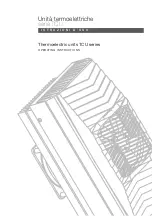
100c
User Manual
24
ch
.
3
CHAPTER 3: PULSE ARC WELDING
*all welding examples in this chapter were performed with an Orion 150s and are solely used in
this user manual to explain principle .
Welding Basics
The Orion is a pulse-arc welder and a capacitive discharge resistance welder in one . This
combination of abilities allows for infinite creative possibilities . In its Tack Mode the Orion can be
used to temporarily position parts before welding or soldering . By increasing the energy output it
can also be used as a permanent fusion welder (resistance welder, spot welder) . In its Pulse Arc
Mode, the Orion can be used to perform permanent welds, add metal, and do a variety of other
amazing and time saving applications .
WHAT IS A PULSE-ARC WELDER?
A pulse-arc welder is a specialized type of a Tungsten Inert Gas (TIG) welder . In TIG welding, a
sharpened tungsten electrode is used in combination with electrical energy to start and sustain
a high temperature plasma stream - an arc . This plasma arc is used as a heat source to melt the
work piece metal . Filler metal can also be added to build up joints and create strong and reliable
weld “beads”, or weld seams .
TIG welders can use AC (alternating current) or DC (direct current) energy to initiate the pulse-arc-
weld . The Orion uses industrial capacitive discharge technology to produce the pulse-arc weld .
Because AC wall voltage can vary up to 20% during the day, capacitive welders have the advantage
over AC technologies of precisely storing energy before the welding process . This means that the
Orion will produce a repeatable weld independent of AC power fluctuations .
PULSE ARC WELDING FUNDAMENTALS
Pulse Arc welding uses electrical energy to create a plasma discharge . The high temperature
plasma in turn melts metal in a small spot . This process takes place in milliseconds . The process
is clean, and very controllable – perfect for intricate and minute welding applications .
The Orion’s welding process (See image on top of next page) . 1 . The user touches the electrode to
the surface with very light pressure . 2 . The Orion turns on the shielding gas (argon) . 3 . The Orion
retracts the electrode and sends a burst of electrical energy – forming a plasma arc . Please note
that the weld is only made after the electrode lifts from the work piece surface – therefore it is
important to use very light pressure .
*Remember that the weld is created only when the electrode lifts from the work piece surface .
This means that using too much pressure will prevent a weld from taking place and will also
damage your electrode .
















































